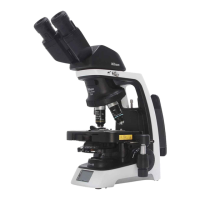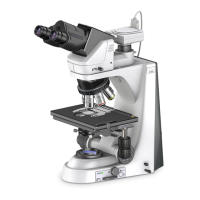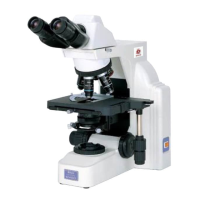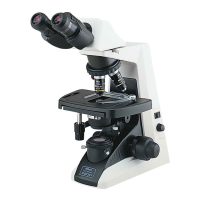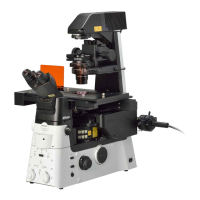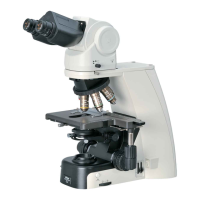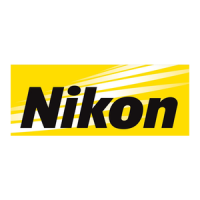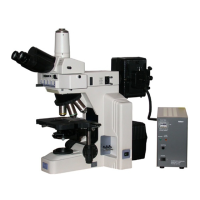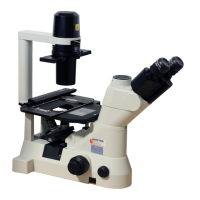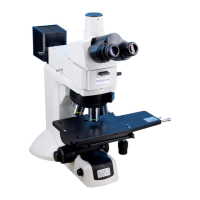Chapter 3 Individual Operations
133
Individual
Operations
There is a Ph objective used for APC (Apodized Phase Contrast) microscopy that reduces halos with enhanced contrast of
a minute structure compared to the above phase contrast microscopy. See the table below for the use properties of Ph
objectives for APC observation.
Use Properties of Ph Objectives for APC Observation
Ph contrast
objective
Appearance Contrast Latitude Usage example
ADL
Intermediate
(with broader
usage)
Phase contrast
and absorbing
object
(chromosome)
in low and
intermediate
latitude
Bacteria's spore, general
live bacteria, slightly thick
specimen, bacteria, dyed
specimen, egg, fat
particle, crystalline, etc.
Dark
contrast
ADH
Generally, an object
with larger phase
contrast appears
darker.
Therefore, the image is
shown in black in a
relatively brighter field
of view, similar to the
one observed with
bright-field microscopy.
Suitable for
detailed
observation
mainly
using micro
contrast.
High
(with
relatively
narrower
usage)
Transparent
object in low
latitude
Bacteria and protozoal
flagellum, fibrin basic
fiber, fine granule,
mounting-agent-selective
slice, ultrathin slice, etc.
Plan fluor Ph objectives
Plan fluor Ph objectives can also be used for bright-field, differential interference contrast, and epi-fluorescence
microscopies. Plan apochromat Ph objectives can also be used for bright-field, differential interference contrast, and
epi-fluorescence (excluding UV-excited) microscopies. Since both types of objectives are equipped with an internal
phase plate, they may present images that differ somewhat from those presented by method-specific objectives. Use
method-specific objectives for strict observations.
Centering of the objective (phase plate) and the PH module (Ph annular diaphragm)
A phase contrast effect is achieved by correctly aligning the objective's phase plate with the condenser's PH module (Ph
annular diaphragm).
The phase image will differ slightly depending on how the PH module overlaps the phase plate, thus for a stricter
observation or capturing of still images, check whether the PH module and the phase plate are concentric at each
magnification. In addition, slightly decentering the PH module and the phase plate will produce a shadowing effect,
resulting in a stereo image. Use this method as appropriate for the specimen. See “6 Phase Contrast Microscopy
Procedure - 14 Center the PH module”.
18.2
Using Optical Elements
■ PH module
There are various kinds of PH modules: [D-C PH-1], [D-C PH-2] and [D-C PH-3] to be attached to the universal
condenser. Use the PH module which has the same code as the Ph objective code.
See Chapter 9 “9.2 Using the NI-CUD-E Motorized Universal Condenser (Dry)” and “9.3 Using the NI-CUD Universal
Condenser (Dry)” for details.
Ph code
Identification code for a Ph objective's phase plate or a condenser's PH module.
One of the Ph codes, [Ph1], [Ph2], or [Ph3] is indicated on the Ph objective depending on the size of the phase plate. (Ph
codes have nothing to do with the magnification of the objective). Likewise, condenser turret's PH modules are assigned
a corresponding Ph code. For phase contrast microscopy, the objective and the PH module placed in the optical path
must have an identical Ph code. Otherwise, phase effect cannot be obtained.
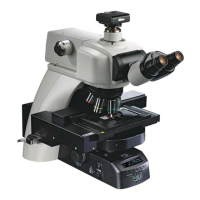
